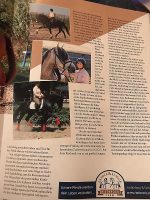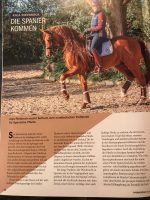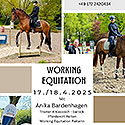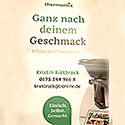The long tradition of horse breeding in Spain was largely associated with bullfighting in the past and all breeding goals always served the purpose of breeding relatively small, agile, but also powerful horses with short, dancing triple steps, rapid turns and breathtaking sprints shone in the bullring and knew how to inspire the audience with their appearance. The training of horses in today’s Spain is only beginning to change gradually. Like many baroque horse breeds, the Spanish horses are late-developing, they are only ridden in when they are four or five years old and often go through a tough school. For their original purpose in the bullring, blind obedience to the rider, the prompt reaction to the finest assistance in an emergency is the decision between life and death, for the horse as well as for its rider.
For some years now, renowned studs in Spain have discovered a growing market for their majestic horses throughout Europe and are now breaking new ground in breeding and training in order to adapt the breed characteristics to the wishes of potential buyers. The outward signs are set in Grand Prix Sport, where recently Spanish horses have appeared again and again, embodying the modern sport horse, with excellent basic gaits in walk, trot and canter. Nevertheless, these horses always set special accents in the collected lessons such as piroutte, piaffe and passage, which were put into their cradle with typical ease as well as side movements of all kinds.Eight years ago Anja Rietbrock had a good friend who lives in Gran Canaria, who sent her a Spanish horse and thus initiated a development that she had never expected. First of all, Anja was surprised to see how pleasant the soft seating comfort in the saddle of these horses had on painful intervertebral discs and other back problems. In addition, there is a high level of intelligence, sensitivity, trust in people and easy rideability. This overall package makes them the ideal partner to be able to practice equestrian sports into old age!
In order to maintain the breed-typical characteristics and the high breeding standard, the horses are subject to a strict examination by the licensing committee of the Spanish Breeding Association (ANCCE). It was a big event for Anja Rietbrock that the licensing committee recently visited her riding facility in Sottrum. The joy was particularly great that of the five horses presented, three were licensed that fully correspond to the specified breeding goal. The Commission had not made the task easy for itself. In addition to the assessment of conformation and basic gaits, the horses were systematically measured, whereby the head, neck and chest width, but also, for example, cannon bone and carpal joint should fit together in the right proportions in order to produce a harmonious overall picture.
Among the customers who are enthusiastic about Spanish horses are many ambitious recreational riders, but also those returning to the sport who enjoy their hobby without pressure to perform and want to be out and about with light assistance in the riding hall, on the field or in the terrain. The proud Spaniards will certainly attract attention everywhere. The new direction of breeding as well as a gentle horse-friendly training has not yet become established everywhere in Spain, so it would be wise to entrust yourself to a professional when looking for the right horse. Anja Rietbrock works with two well-known breeders, from whom she receives selected horses on commission, which she professionally promotes and trains so that the buyer can have fun with a four-legged friend for a long time. In addition to warm-blooded animals, she has a small, elite selection of Iberians for sale in the stable. To make it especially easy for those returning to school, qualified lessons on Spanish horses are offered on the course. The equine management master Ulrike Hatzl is also involved here, who learned from Anja Rietbrock 15 years ago and has now been working independently on the training facility for around two years.
(Text und Photos: Pferdesport Bremen – Verlag Ehlers)

 Today, in addition to Hanoverians and ponies, there are also numerous Spanish horses in training and for sale in the boxes on the Rietbrock family’s extensive training facility. The most famous breed of Spanish horses is the Pura Raza Espanol (PRE). In addition, the Cruzado is also bred, refined with warmblood horses, and the Hispano, in whose family tree thoroughbred Arabs are crossed. The most famous breeds include the Andalusian and the Lusitano from Portugal.
Today, in addition to Hanoverians and ponies, there are also numerous Spanish horses in training and for sale in the boxes on the Rietbrock family’s extensive training facility. The most famous breed of Spanish horses is the Pura Raza Espanol (PRE). In addition, the Cruzado is also bred, refined with warmblood horses, and the Hispano, in whose family tree thoroughbred Arabs are crossed. The most famous breeds include the Andalusian and the Lusitano from Portugal.



















